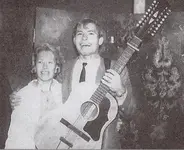Y
YeshuasFan
Guest
Looking for pics of an 18-string guitar. They were made back in the late 1960s -early 1970s by a man named Ralph Smith. He was a machinist for Cessna in Wichita, Kansas, who built guitars for a hobby in his woodworking shop. The 18-string was his innovation--basically a variation/extension of the 12-string, except the strings were in courses of 3 instead of 2. He lessened the tension on the neck by using extra-light guage silk and steel strings.
I saw one of these when I was in high school and the owner actually allowed me the privilege of playing it briefly. I was surprised to find that it did not require much more effort to chord than a 12-string.
Any info would be appreciated.
I saw one of these when I was in high school and the owner actually allowed me the privilege of playing it briefly. I was surprised to find that it did not require much more effort to chord than a 12-string.
Any info would be appreciated.





